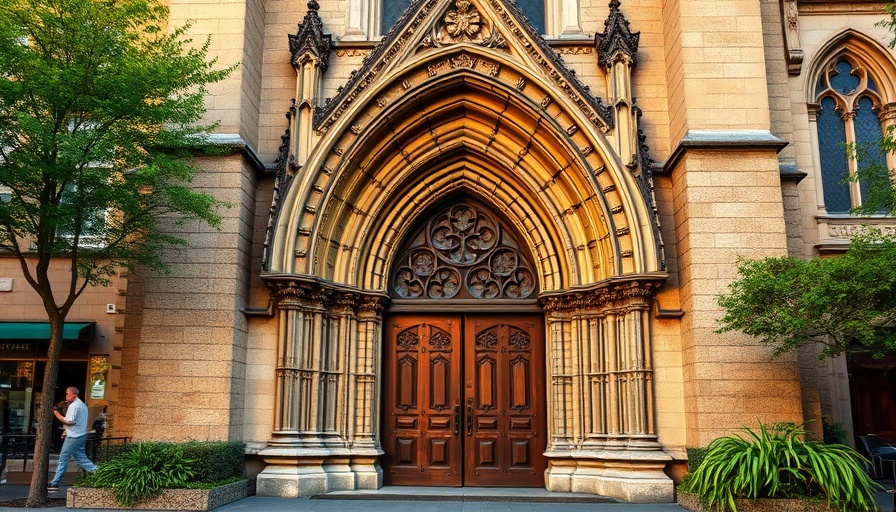
A Historical Sanctuary: The Birth of St. Paul the Apostle Church
St. Paul the Apostle Church, located on Columbus Avenue and 60th Street, stands as a monument of architectural ingenuity, intertwining history with a vision for spiritual community. Built under the guidance of Father Isaac Hecker, who originated from humble beginnings as a delivery boy, the church's establishment in the late 19th century was inspired by his dedication to creating a space that embodied both the grandeur of ancient basilicas and modern American sensibilities.
The Innovative Use of Salvaged Materials
Unique to St. Paul's construction is its use of salvaged stones from various iconic New York landmarks. The meticulous approach to sourcing materials exemplified a creative reclamation of the past, transforming structural remnants from demolished structures into a sanctuary of worship. This initiative echoes the Paulist Fathers' mission to embrace those searching for belonging, representing a continuity of faith and history. Among the salvaged materials were pieces from the Croton Aqueduct and the decommissioned reservoir on 42nd Street—a project that intertwined functionality with a deeper meaning.
Artistic Collaborations that Enrich the Soul
The interior decoration of St. Paul’s highlights Father Hecker's commitment to art as a means of worship. Collaborations with renowned artists such as John LaFarge for the stained-glass windows and Stanford White for the high altar culminated in a mesmerizing atmosphere that welcomes congregants and visitors alike. These components not only enhance the church's aesthetic value but also symbolize the church’s mission to inspire and uplift through art.
Why St. Paul’s Matters Today
More than just a physical structure, St. Paul the Apostle Church remains a beacon of hope and community. In today’s rapidly changing urban landscape, the church is a reminder of the power of resilience and adaptation. By embracing salvaged elements, it tells a story of rebirth, relevant not only to religious practice but also to broader cultural narratives of sustainability and inclusivity. In an age where profound connectivity is often sought, spaces like St. Paul’s become vital for nurturing community bonds and spiritual reflection.
For those exploring New York, visiting St. Paul the Apostle offers a unique glimpse into a significant chapter of the city’s religious and architectural evolution. The church stands as an essential destination for anyone looking to understand the intersection of faith, art, and history in the Big Apple. So, on your next visit to the West Side, take the opportunity to explore this masterpiece, designed not merely for worship, but for fostering an enduring community.
 Add Row
Add Row  Add Element
Add Element 



Write A Comment